4
Aug
2020
Pigeon Toes – What, Why & When Kids Need Treatment
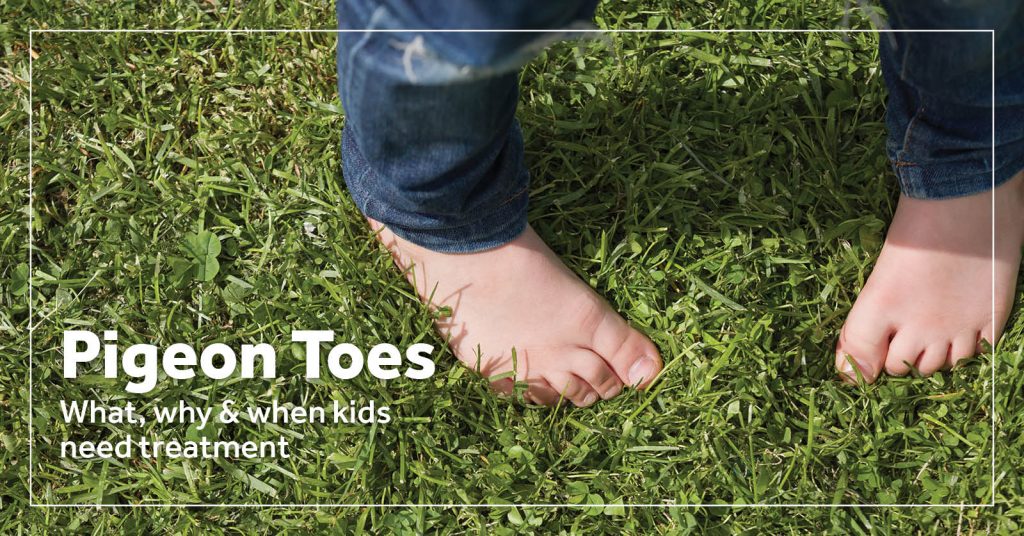
Is this normal?
As a parent, you’ve asked this over and over and over.
Often, what sparked that question is harmless, a fluke, or an example of your child’s own brand of quirkiness.
But sometimes the answer is, “No, and we need to do something about it.”
Pigeon toes can fall into that category. And even though plenty of kids outgrow it on their own, that’s not a sure thing.
What Are Pigeon Toes and What Causes Them?
This question is both easy and complex.
Pigeon toes (also called intoeing and pigeon feet) refers to the inward rotation of your child’s feet. Instead of pointing forward, they turn in.
That seems simple enough. But being pigeon toed is also a bit of a blanket term. Several different medical conditions can result in the same, visual issue. It all depends where that inward rotation originates from:
- Feet
- Shins
- Thighs
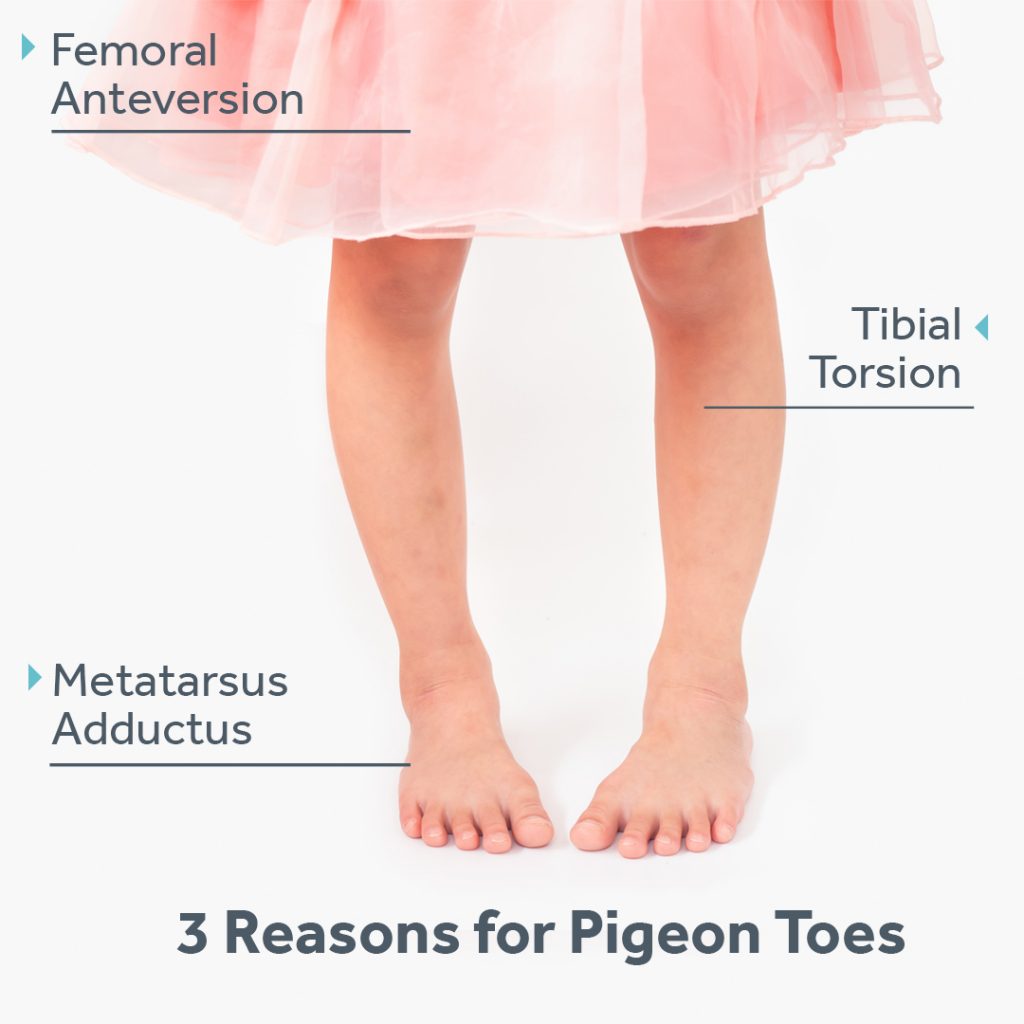
Metatarsus Adductus
Metatarsus adductus (also calls metatarsus varus) refers to the inward curve of your child’s forefoot. This gives the foot a bowed appearance. Heredity and positioning in utero are common causes.
Tibial Torsion
For some kids, the shin bone (tibia) twists inside. This causes the feet to rotate, too.
This type of intoeing may not be very noticeable when your little one is a baby. But it becomes more apparent as he or she begins standing and walking.
Femoral Anteversion
This is similar to tibial rotation except that it’s the thigh bone (femur) that rotates inward. It causes your child’s entire leg, including the feet, to twist.
Should I Be Concerned?
Intoeing is a problem that often fixes itself without the need for any sort of pigeon toe correction. As kids grow, those toes begin turning in the right direction.
But that’s not always the case.
So when should you wait and when should you take seek treatment?
Here are two things to keep in mind.
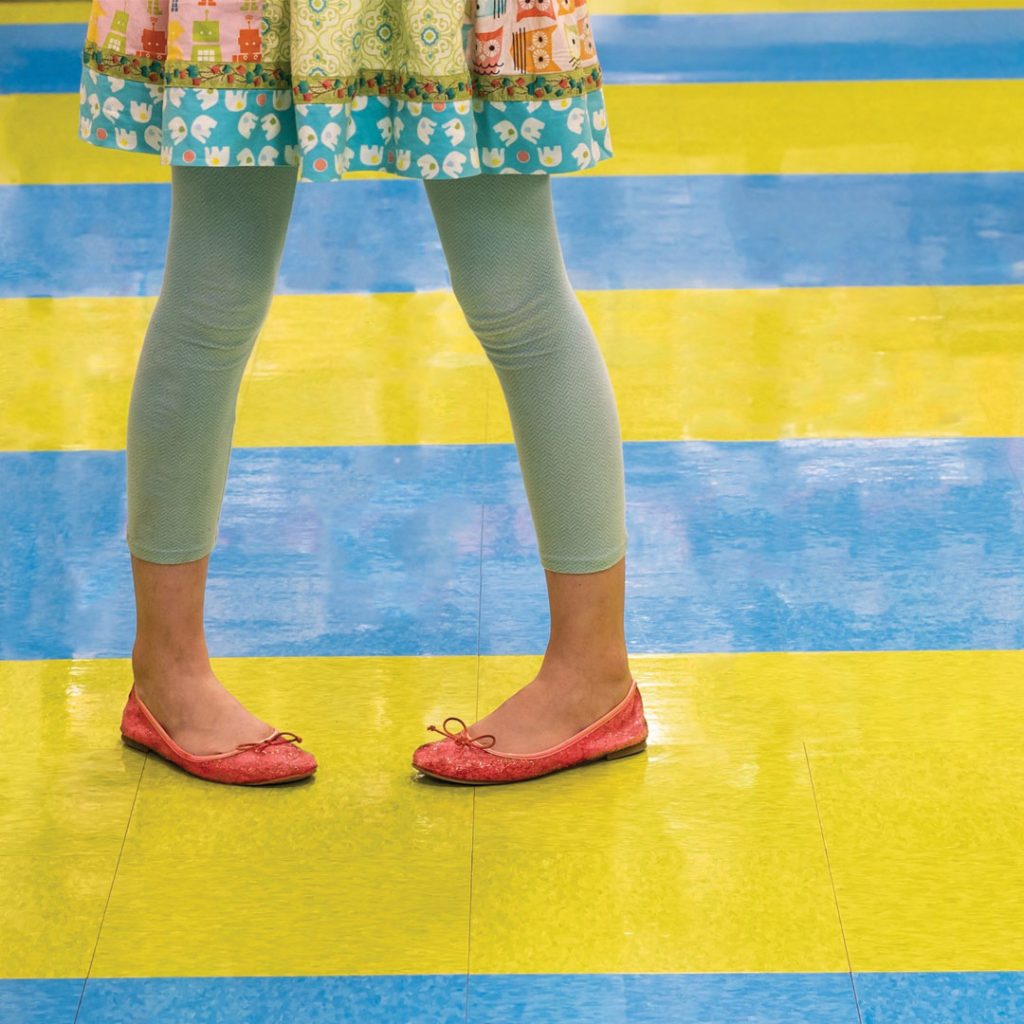
Parental Intuition
Don’t be too quick to dismiss your gut feeling. If you have a nagging suspicion that something needs to be done, speak up.
After all, getting an expert opinion or two doesn’t hurt.
Overarching Diagnoses
Pigeon toed toddlers, as well as older kids, are less likely to correct themselves if your little one has an overarching diagnosis contributing to the rotation. Common examples include:
- Cerebral palsy
- Down syndrome
- Hypotonia
- Spina Bifida
Pigeon Toe Treatment
So, how can you correct pigeon toes?
Stretching, casting, and physical therapy are all options. This will vary depending on your child.
Something else to consider are pigeon toes braces. This solution address the cause of the intoeing and potentially helps your little one avoid surgery.
Pigeon Toe Braces
There are a couple of different braces and orthotic solutions to consider.
Surestep SMOs
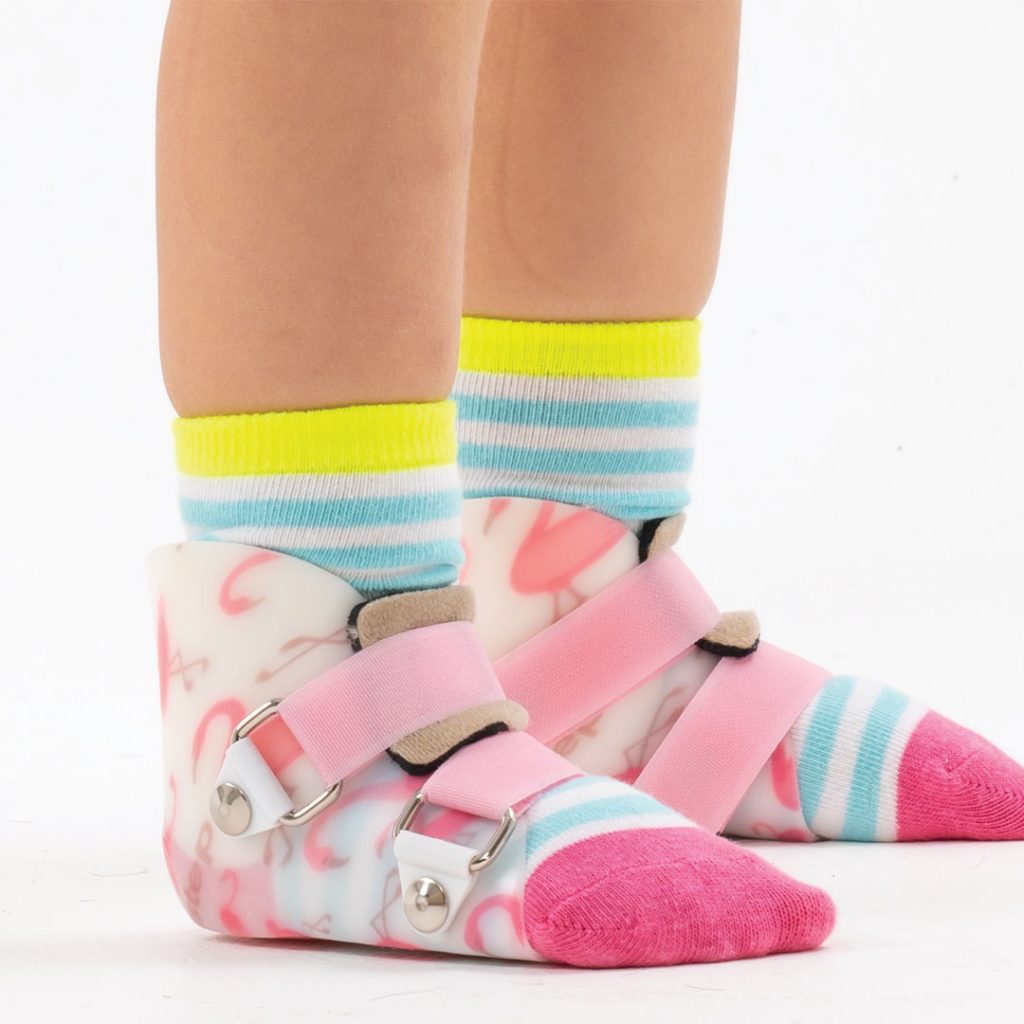
Surestep SMOs are custom-made ankle braces that increase stability, improve alignment, and build confidence.
Although they’re designed to treat pronation, they can be specifically modified to address metatarsus adductus.
The shape and function of the SMOs guide those little feet back out.
Derotation Straps
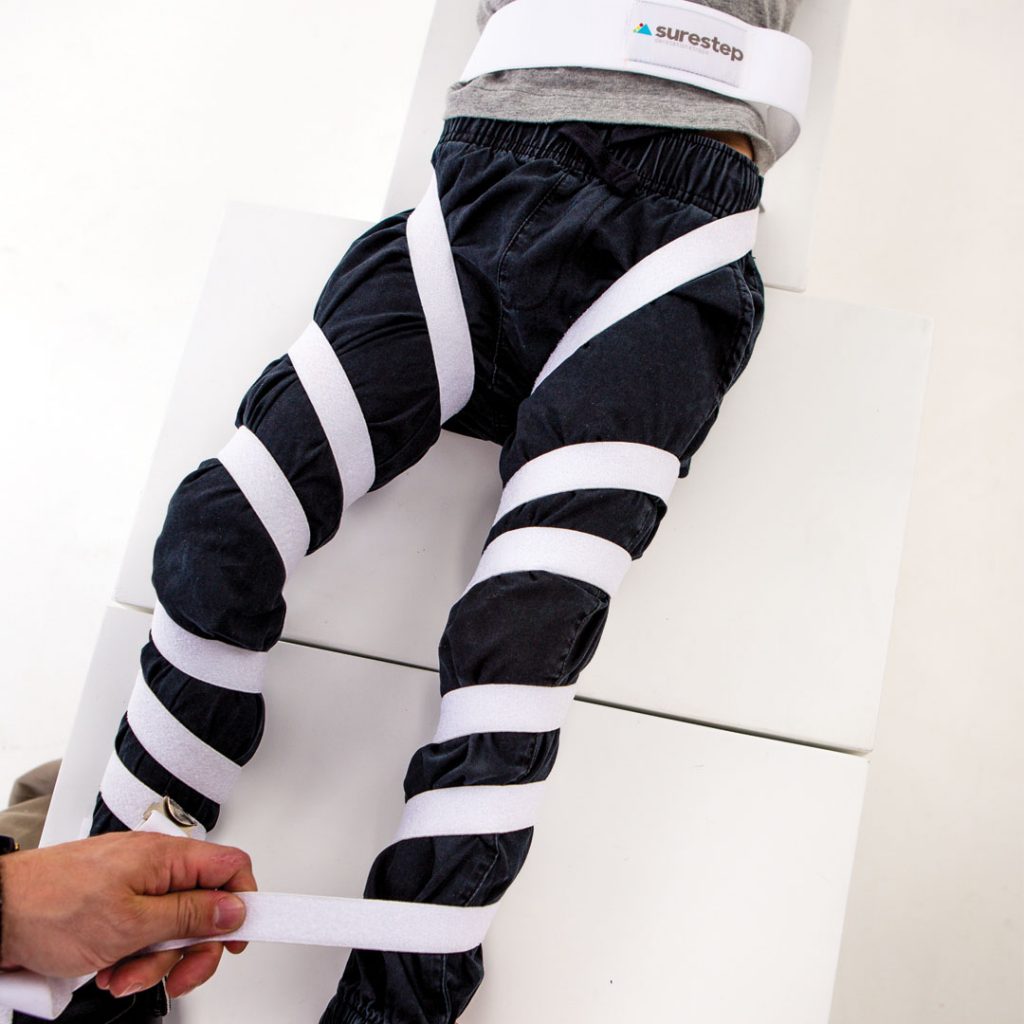
Derotation Straps (available custom-made or off-the-shelf) are elastic bands that wrap around your child from hip to foot. So no matter if it’s the femurs or tibias that are causing the pigeon toes, these rotate in the opposite direction, which brings the feet back into proper alignment.
They can easily be worn under clothes. And unlike more inconvenient options like casting, Derotation Straps easily be taken off whenever needed.
Why Not Both?
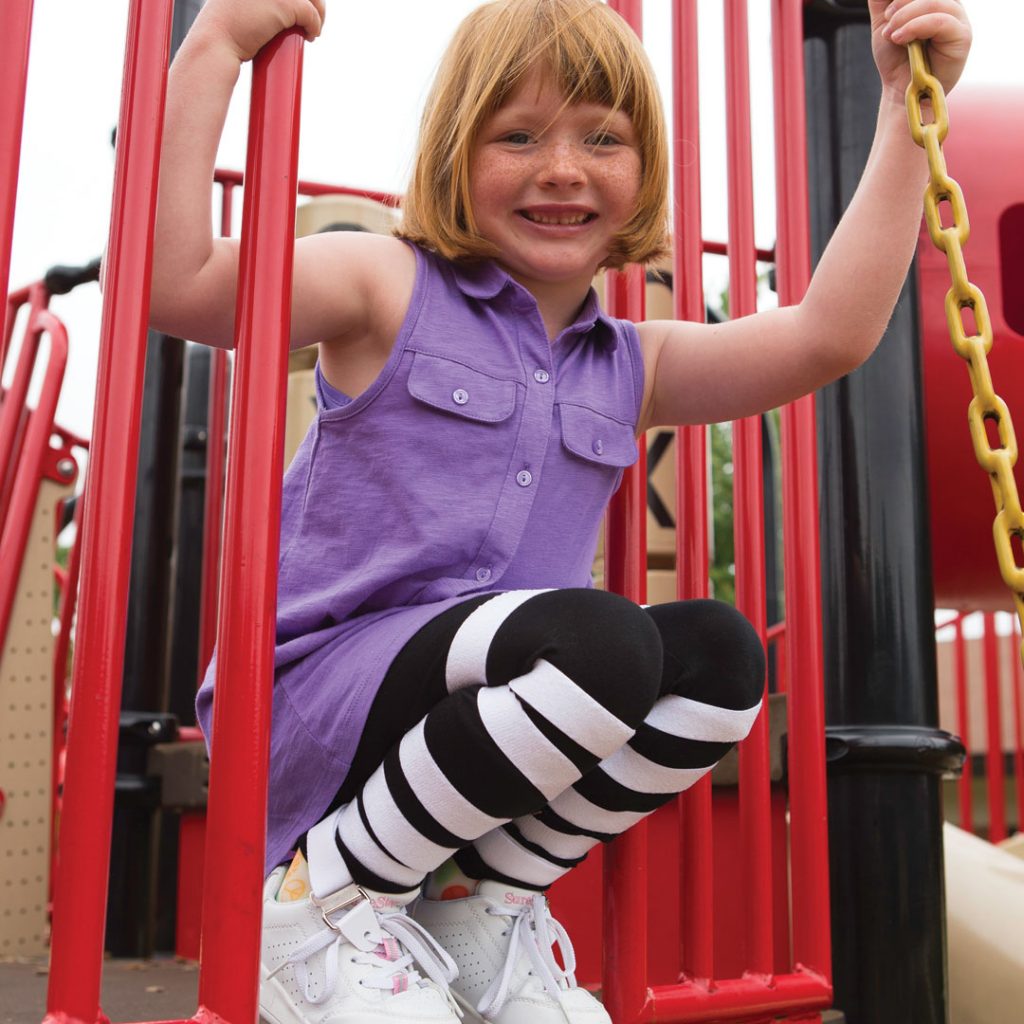
Although Surestep SMOs and Derotation Straps can be worn independently, they’re often combined. This creates a tag team solution that effectively yet comfortably treats pigeon toes. Both can be ordered through your local orthotist.
So no matter what is causing the pigeon toes in your little one, there’s no reason to panic. It often corrects itself. And if not, there are a variety of corrective solutions available.
How do I order Surestep devices?
